7.1 Classical Conditioning: One Thing Leads to Another
American psychologist John B. Watson kick-
Pavlov was awarded the Nobel Prize in Physiology in 1904 for his work on the salivation of dogs. Pavlov studied the digestive processes of laboratory animals by surgically implanting test tubes into the cheeks of dogs to measure their salivary responses to different kinds of foods. Serendipitously, his explorations into spit and drool revealed the mechanics of one form of learning, which came to be called classical conditioning. Classical conditioning occurs when a neutral stimulus produces a response after being paired with a stimulus that naturally produces a response. In his classic experiments, Pavlov showed that dogs learned to salivate to neutral stimuli such as a bell or a tone after that stimulus had been associated with another stimulus that naturally evokes salivation, such as food.
The Development of Classical Conditioning: Pavlov’s Experiments

 Figure 7.1: Pavlov’s Apparatus for Studying Classical Conditioning Pavlov presented auditory stimuli to the animals using a bell or a tuning fork. Visual stimuli could be presented on the screen.
Figure 7.1: Pavlov’s Apparatus for Studying Classical Conditioning Pavlov presented auditory stimuli to the animals using a bell or a tuning fork. Visual stimuli could be presented on the screen.
Pavlov’s basic experimental setup involved cradling dogs in a harness to administer the foods and to measure the salivary response, as shown in FIGURE 7.1. He noticed that dogs that had previously been in the experiment began to produce a kind of “anticipatory” salivary response as soon as they were put in the harness, before any food was presented. Pavlov and his colleagues regarded these responses as annoyances at first because they interfered with collecting naturally occurring salivary secretions. In reality, the dogs were behaving in line with the four basic elements of classical conditioning:
 When the dogs were initially presented with a plate of food, they began to salivate. No surprise here–placing food in front of most animals will launch the salivary process. Pavlov called the presentation of food an unconditioned stimulus (US), something that reliably produces a naturally occurring reaction in an organism.
When the dogs were initially presented with a plate of food, they began to salivate. No surprise here–placing food in front of most animals will launch the salivary process. Pavlov called the presentation of food an unconditioned stimulus (US), something that reliably produces a naturally occurring reaction in an organism. He called the dogs’ salivation an unconditioned response (UR), a reflexive reaction that is reliably produced by an unconditioned stimulus.
He called the dogs’ salivation an unconditioned response (UR), a reflexive reaction that is reliably produced by an unconditioned stimulus. Pavlov soon discovered that he could make the dogs salivate to neutral stimuli, things that don’t usually make animals salivate such as the ringing of a bell. In various experiments, Pavlov paired the presentation of food with the sound of a bell, the ticking of a metronome, the humming of a tuning fork, or the flash of a light (Pavlov, 1927). Sure enough, he found that the dogs salivated to these sounds and flashes, each of which had become a conditioned stimulus (CS), a previously neutral stimulus that produces a reliable response in an organism after being paired with a US (see FIGURE 7.2).
Pavlov soon discovered that he could make the dogs salivate to neutral stimuli, things that don’t usually make animals salivate such as the ringing of a bell. In various experiments, Pavlov paired the presentation of food with the sound of a bell, the ticking of a metronome, the humming of a tuning fork, or the flash of a light (Pavlov, 1927). Sure enough, he found that the dogs salivated to these sounds and flashes, each of which had become a conditioned stimulus (CS), a previously neutral stimulus that produces a reliable response in an organism after being paired with a US (see FIGURE 7.2).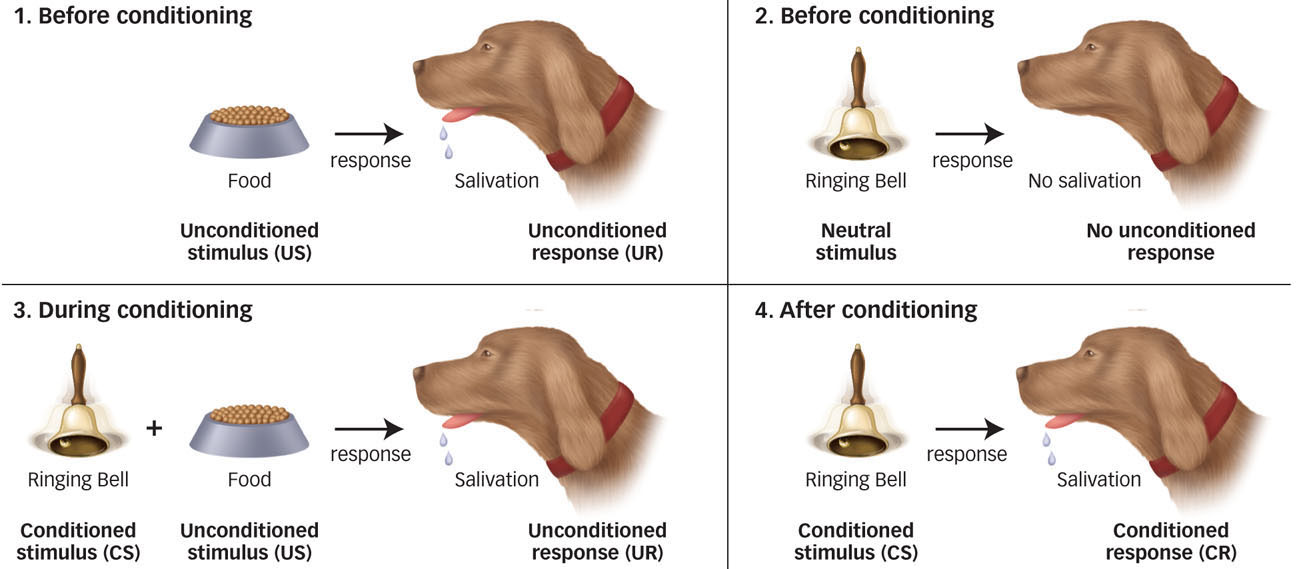
 Figure 7.2: The Elements of Classical Conditioning In classical conditioning, a previously neutral stimulus (such as the sound of a bell) is paired with an unconditioned stimulus (such as the presentation of food). After several trials associating the two, the conditioned stimulus (the sound) alone can produce a conditioned response.
Figure 7.2: The Elements of Classical Conditioning In classical conditioning, a previously neutral stimulus (such as the sound of a bell) is paired with an unconditioned stimulus (such as the presentation of food). After several trials associating the two, the conditioned stimulus (the sound) alone can produce a conditioned response.
 Nothing in nature would make a dog salivate to the sound of a bell. However, when the CS (the sound of a bell) is paired over time with the US (the food), the animal will learn to associate food with the sound and eventually the CS is sufficient to produce a response, or salivation. This response resembles the UR, but Pavlov called it the conditioned response (CR), a reaction that resembles an unconditioned response but is produced by a conditioned stimulus. In this example, the dogs’ salivation (CR) was eventually prompted by the sound of the bell (CS) alone because the sound of the bell and the food (US) had been associated so often in the past.
Nothing in nature would make a dog salivate to the sound of a bell. However, when the CS (the sound of a bell) is paired over time with the US (the food), the animal will learn to associate food with the sound and eventually the CS is sufficient to produce a response, or salivation. This response resembles the UR, but Pavlov called it the conditioned response (CR), a reaction that resembles an unconditioned response but is produced by a conditioned stimulus. In this example, the dogs’ salivation (CR) was eventually prompted by the sound of the bell (CS) alone because the sound of the bell and the food (US) had been associated so often in the past.
Why do some dogs seem to know when it’s dinnertime?
Consider your own dog (or cat). Does your dog always know when dinner’s coming, preparing just short of pulling up a chair and tucking a napkin into her collar? It’s as though she has one eye on the clock every day, waiting for the dinner hour. Alas, your dog is no clockwatching wonder hound. Instead, the presentation of food (the US) has become associated with a complex CS-
The Basic Principles of Classical Conditioning
When Pavlov’s findings first appeared in the scientific and popular literature (Pavlov, 1923a, 1923b), they produced a flurry of excitement because psychologists now had demonstrable evidence of how conditioning produced learned behaviors. This was the kind of behaviorist psychology John B. Watson was proposing: An organism experiences events or stimuli that are observable and measurable, and changes in that organism can be directly observed and measured. Dogs learned to salivate to the sound of a buzzer, and there was no need to resort to explanations about why it had happened, what the dog wanted, or how the animal thought about the situation. In other words, there was no need to consider the mind in this classical conditioning paradigm, which appealed to Watson and the behaviorists. Pavlov also appreciated the significance of his discovery and embarked on a systematic investigation of the mechanisms of classical conditioning. Let’s take a closer look at some of these principles. (As the Real World box shows, these principles help explain how drug overdoses occur.)
269
Acquisition
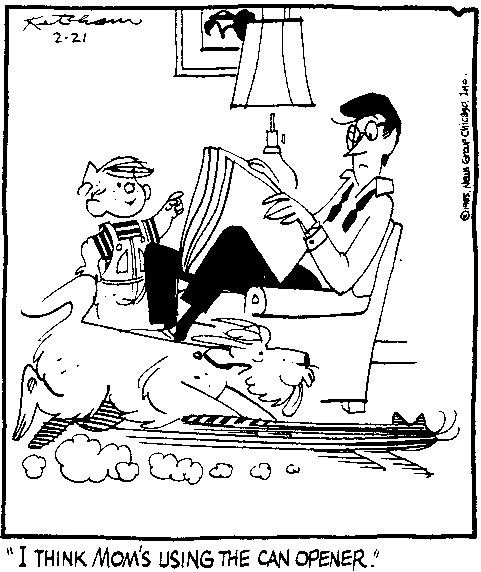
Remember when you first got your dog? Chances are she didn’t seem too smart, especially the way she stared at you vacantly as you went into the kitchen, not anticipating that food was on the way. That’s because learning through classical conditioning requires some period of association between the CS and US. This period is called acquisition, the phase of classical conditioning when the CS and the US are presented together. During the initial phase of classical conditioning, typically there is a gradual increase in learning: It starts low, rises rapidly, and then slowly tapers off, as shown on the left side of FIGURE 7.3. Pavlov’s dogs gradually increased their amount of salivation over several trials of pairing a tone with the presentation of food, and similarly, your dog eventually learned to associate your kitchen preparations with the subsequent appearance of food. After learning has been established, the CS by itself will reliably elicit the CR.
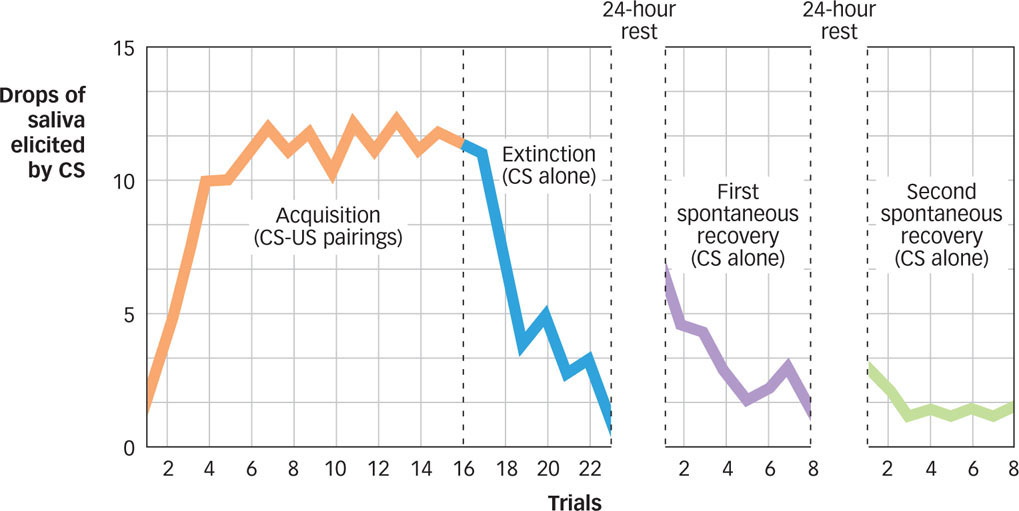
 Figure 7.3: Acquisition, Extinction, and Spontaneous Recovery In classical conditioning, the CS is originally neutral and produces no specific response. After several trials pairing the CS with the US, the CS alone comes to elicit the salivary response (the CR). Learning tends to take place fairly rapidly and then levels off as stable responding develops. In extinction, the CR diminishes quickly until it no longer occurs. A rest period, however, is typically followed by spontaneous recovery of the CR. In fact, a well-
Figure 7.3: Acquisition, Extinction, and Spontaneous Recovery In classical conditioning, the CS is originally neutral and produces no specific response. After several trials pairing the CS with the US, the CS alone comes to elicit the salivary response (the CR). Learning tends to take place fairly rapidly and then levels off as stable responding develops. In extinction, the CR diminishes quickly until it no longer occurs. A rest period, however, is typically followed by spontaneous recovery of the CR. In fact, a well-Second-Order Conditioning
After conditioning has been established, a phenomenon called second-order conditioning can be demonstrated: conditioning where a CS is paired with a stimulus that became associated with the US in an earlier procedure. For example, in an early study Pavlov repeatedly paired a new CS, a black square, with the now reliable tone. After a number of training trials, his dogs produced a salivary response to the black square even though the square itself had never been directly associated with the food. Second-
270
Extinction and Spontaneous Recovery
After Pavlov and his colleagues had explored the process of acquisition extensively, they turned to the next logical question: What would happen if they continued to present the CS (tone) but stopped presenting the US (food)? Repeatedly presenting the CS without the US produces exactly the result you might imagine. As shown on the right side of the first panel in Figure 7.3, behavior declines abruptly and continues to drop until eventually the dog ceases to salivate to the sound of the tone. This process is called extinction, the gradual elimination of a learned response that occurs when the CS is repeatedly presented without the US. The term was introduced because the conditioned response is “extinguished” and no longer observed.
THE REAL WORLD: Understanding Drug Overdoses
All too often, police are confronted with a perplexing problem: the sudden death of addicts from a drug overdose. These deaths are puzzling for at least three reasons: The victims are often experienced drug users; the dose taken is usually not larger than what they usually take; and the deaths tend to occur in unusual settings. Experienced drug users are just that: experienced! So, you’d think that the chances of an overdose would be lower than usual.
Classical conditioning provides some insight into how these deaths occur. First, when classical conditioning takes place, the CS is more than a simple bell or tone: It also includes the overall context within which the conditioning takes place. Indeed, Pavlov’s dogs often began to salivate even as they approached the experimental apparatus. Second, many CRs are compensatory reactions to the US. Heroin, for example, slows down a person’s breathing rate, so the body responds with a compensatory reaction that speeds up breathing in order to maintain a state of balance or homeostasis, a critically important CR.
These two finer points of classical conditioning help explain the seeming paradox of fatal heroin overdoses in experienced drug users (Siegel, 1984, 2005). When the drug is injected, the entire setting (the drug paraphernalia, the room, the lighting, the addict’s usual companions) functions as the CS, and the addict’s brain reacts to the heroin by secreting neurotransmitters that counteract its effects. Over time, this protective physiological response becomes part of the CR, and like all CRs, it occurs in the presence of the CS but prior to the actual administration of the drug. These compensatory physiological reactions are also what make drug abusers take increasingly larger doses to achieve the same effect. Ultimately, these reactions produce drug tolerance, discussed in the Consciousness chapter.
Based on these principles of classical conditioning, taking drugs in a new environment can be fatal for a longtime drug user. If an addict injects the usual dose in a setting that is sufficiently novel or where heroin has never been taken before, the CS is now altered, so that the physiological compensatory CR that usually serves a protective function either does not occur or is substantially decreased (Siegel et al., 2000). As a result, the addict’s usual dose becomes an overdose and death often results. Intuitively, addicts may stick with the crack houses, opium dens, or “shooting galleries” with which they’re familiar for just this reason. This effect has also been shown experimentally: Rats that have had extensive experience with morphine in one setting were much more likely to survive dose increases in that same setting than in a novel one (Siegel, 1976; Siegel et al., 2000). This same basic effect occurs with a variety of drugs. For example, college students show less tolerance for the intoxicating effects of alcohol when they consume it in the presence of a novel cue (a peppermint-

Understanding these principles has also led to treatments for drug addicts. For example, the brain’s compensatory response to a drug, when elicited by the familiar contextual cues ordinarily associated with drug taking that constitute the CS, can be experienced by the addict as withdrawal symptoms. In cue exposure therapies, an addict is exposed to drug-
271
How does conditioned behavior change when the unconditioned stimulus is removed?
Having established that he could produce learning through conditioning and then extinguish it, Pavlov wondered if this elimination of conditioned behavior was permanent. Is a single session of extinction sufficient to knock out the CR completely, or is there some residual change in the dog’s behavior so that the CR might reappear? To explore this question, Pavlov extinguished the classically conditioned salivation response and then allowed the dogs to have a short rest period. When they were brought back to the lab and presented with the CS again, they displayed spontaneous recovery, the tendency of a learned behavior to recover from extinction after a rest period. This phenomenon is shown in the middle panel in Figure 7.3. Notice that this recovery takes place even though there have not been any additional associations between the CS and US. Some spontaneous recovery of the conditioned response even takes place in what is essentially a second extinction session after another period of rest (see the right-
Generalization and Discrimination

Do you think your dog will be stumped, unable to anticipate the presentation of her food, if you get a new can opener? Will a whole new round of conditioning need to be established with this modified CS?
How can a change in can opener affect a conditioned dog’s response?
Probably not. It wouldn’t be very adaptive for an organism if each little change in the CS–US pairing required an extensive regimen of new learning. Rather, the phenomenon of generalization tends to take place: The CR is observed even though the CS is slightly different from the CS used during acquisition. This means that the conditioning generalizes to stimuli that are similar to the CS used during the original training. As you might expect, the more the new stimulus changes, the less conditioned responding is observed. If you replaced a manual can opener with an electric can opener, your dog would probably show a much weaker conditioned response (Pearce, 1987; Rescorla, 2006).
When an organism generalizes to a new stimulus, two things are happening. First, by responding to the new stimulus used during generalization testing, the organism demonstrates that it recognizes the similarity between the original CS and the new stimulus. Second, by displaying diminished responding to that new stimulus, it also tells us that it notices a difference between the two stimuli. In the second case, the organism shows discrimination, the capacity to distinguish between similar but distinct stimuli. Generalization and discrimination are two sides of the same coin. The more organisms show one, the less they show the other, and training can modify the balance between the two.
272
Conditioned Emotional Responses: The Case of Little Albert
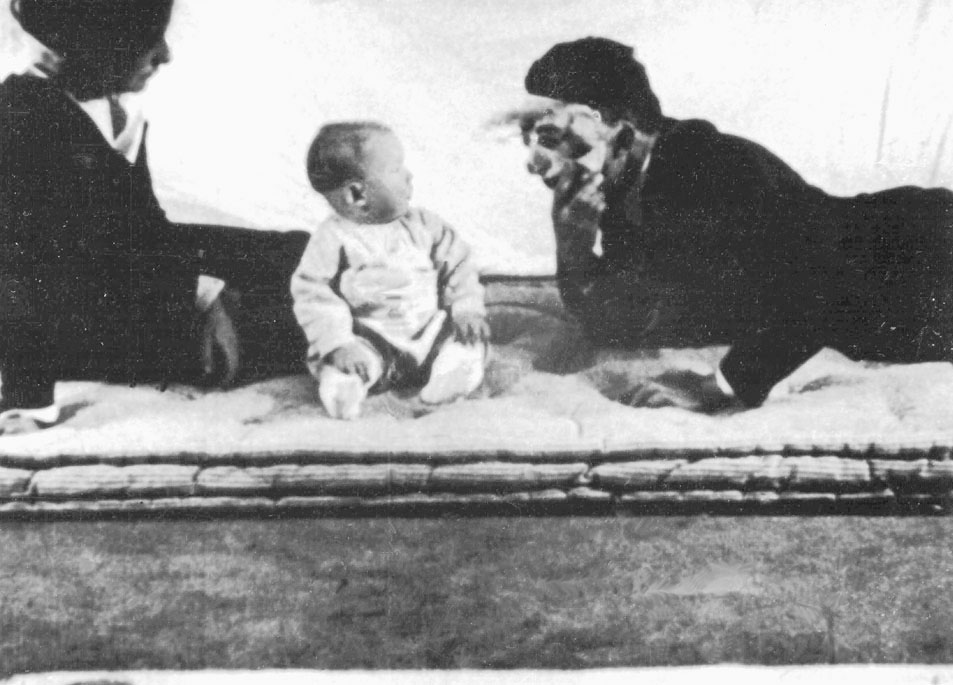
Before you conclude that classical conditioning is merely a sophisticated way to train your dog, let’s revisit the larger principles of Pavlov’s work. Classical conditioning demonstrates that durable, substantial changes in behavior can be achieved simply by setting up the proper conditions. It was this kind of simplicity that appealed to behaviorists. In fact, Watson and his followers thought that it was possible to develop general explanations of pretty much any behavior of any organism based on classical conditioning principles. As a step in that direction, Watson embarked on a controversial study with his research assistant Rosalie Rayner (Watson & Rayner, 1920). To support his contention that even complex behaviors were the result of conditioning, Watson enlisted the assistance of 9-
Watson presented Little Albert with a variety of stimuli: a white rat, a dog, a rabbit, various masks, and a burning newspaper. Albert’s reactions in most cases were curiosity or indifference, and he showed no fear of any of the items. Watson also established that something could make him afraid. While Albert was watching Rayner, Watson unexpectedly struck a large steel bar with a hammer, producing a loud noise. Predictably, this caused Albert to cry, tremble, and be generally displeased.
Why did Albert fear the rat?
Watson and Rayner then led Little Albert through the acquisition phase of classical conditioning. Albert was presented with a white rat. As soon as he reached out to touch it, the steel bar was struck. This pairing occurred again and again over several trials. Eventually, the sight of the rat alone caused Albert to recoil in terror, crying and clamoring to get away from it. In this situation, a US (the loud sound) was paired with a CS (the presence of the rat) such that the CS all by itself was sufficient to produce the CR (a fearful reaction). Little Albert also showed stimulus generalization. The sight of a white rabbit, a seal-
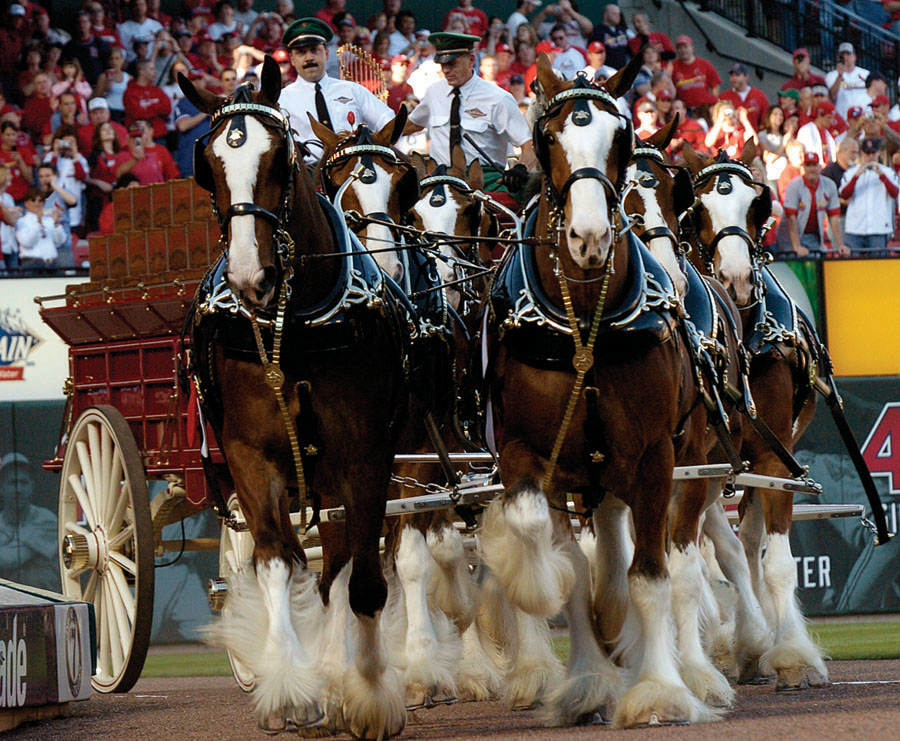
What was Watson’s goal in all this? First, he wanted to show that a relatively complex reaction could be conditioned using Pavlovian techniques. Second, he wanted to show that emotional responses such as fear and anxiety could be produced by classical conditioning and therefore need not be the product of deeper unconscious processes or early life experiences as Freud and his followers had argued (see the Psychology: Evolution of a Science chapter). Instead, Watson proposed that fears could be learned, just like any other behavior. Third, Watson wanted to confirm that conditioning could be applied to humans as well as to other animals. This study was controversial in its cavalier treatment of a young child, especially given that Watson and Rayner did not follow up with Albert or his mother during the ensuing years (Harris, 1979). Modern ethical guidelines that govern the treatment of research participants make sure that this kind of study could not be conducted today. At the time, however, it was consistent with a behaviorist view of psychology.
Why did Albert fear the rat?
The kind of conditioned fear responses that were at work in Little Albert’s case were also important in the chapter-
273
A Deeper Understanding of Classical Conditioning
As a form of learning, classical conditioning could be reliably produced: It had a simple set of principles and applications to real-
Like a lot of strong starters, though, classical conditioning has been subjected to deeper scrutiny in order to understand exactly how, when, and why it works. Let’s examine three areas that give us a closer look at the mechanisms of classical conditioning: the cognitive, neural, and evolutionary elements.
The Cognitive Elements of Classical Conditioning
As we’ve seen, Pavlov’s work was a behaviorist’s dream come true. In this view, conditioning is something that happens to a dog, a rat, or a person, apart from what the organism thinks about the conditioning situation. However, although the dogs salivated when their feeders approached (see Psychology: Evolution of a Science), they did not salivate when Pavlov did. Eventually someone was bound to ask an important question: Why not? After all, Pavlov also delivered the food to the dogs, so why didn’t he become a CS? Indeed, if Watson was present whenever the unpleasant US was sounded, why didn’t Little Albert come to fear him?
Somehow, Pavlov’s dogs were sensitive to the fact that Pavlov was not a reliable indicator of the arrival of food. Pavlov was linked with the arrival of food, but he was also linked with other activities that had nothing to do with food, including checking on the apparatus, bringing the dog from the kennel to the laboratory, and standing around and talking with his assistants.
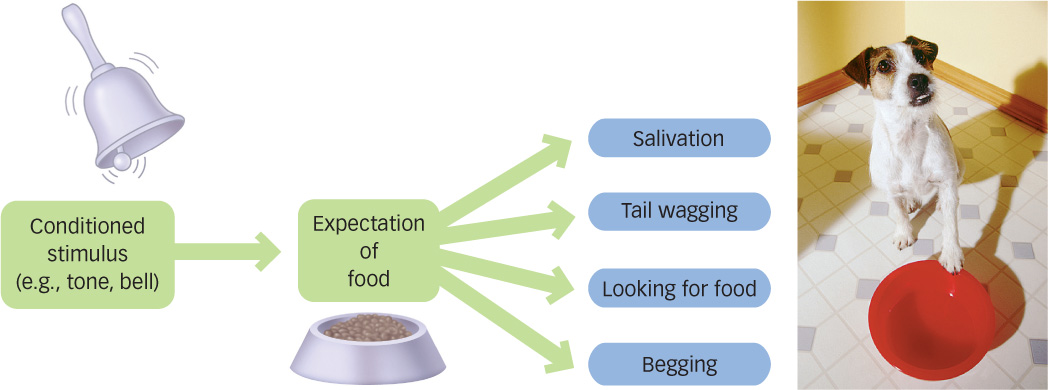
 Figure 7.4: Expectation in Classical Conditioning In the Rescorla–Wagner model of classical conditioning, a CS serves to set up an expectation. The expectation in turn leads to an array of behaviors associated with the presence of the CS.
Figure 7.4: Expectation in Classical Conditioning In the Rescorla–Wagner model of classical conditioning, a CS serves to set up an expectation. The expectation in turn leads to an array of behaviors associated with the presence of the CS.
Robert Rescorla and Allan Wagner (1972) were the first to theorize that classical conditioning occurs when an animal has learned to set up an expectation. The sound of a bell, because of its systematic pairing with food, served to set up this cognitive state for the laboratory dogs; Pavlov, because of the lack of any reliable link with food, did not. In fact, in situations such as this, many responses are actually being conditioned. When the bell sounds, the dogs also wag their tails, make begging sounds, and look toward the food source (Jenkins et al., 1978). In short, what is really happening is something like the situation shown in FIGURE 7.4.
274
The Rescorla–Wagner model introduced a cognitive component that accounted for a variety of classical conditioning phenomena that were difficult to understand from a simple behaviorist point of view. For example, the model predicted that conditioning would be easier when the CS was an unfamiliar event than when it was familiar. The reason is that familiar events, being familiar, already have expectations associated with them, making new conditioning difficult. In short, classical conditioning might appear to be a primitive process, but it is actually quite sophisticated and incorporates a significant cognitive element.
How does the role of expectation in conditioning challenge behaviorist ideas?
One issue that arises from this cognitive view of classical conditioning concerns the role of consciousness. In the Rescorla–Wagner model, the cognitive elements are not necessarily conscious. Rather, they likely reflect the operation of nonconscious associative mechanisms that do more than just record co-
The Neural Elements of Classical Conditioning
Pavlov saw his research as providing insights into how the brain works. After all, he was trained in medicine, not psychology, and was a bit surprised when psychologists became excited by his findings. Recent research has clarified some of what Pavlov hoped to understand about conditioning and the brain.
A series of pioneering experiments conducted across several decades by Richard Thompson and his colleagues focused on classical conditioning of eyeblink responses in the rabbit. In the most basic type of eyeblink conditioning, the CS (a tone) is immediately followed by the US (a puff of air), which elicits a reflexive eyeblink response. After many CS–US pairings, the eyeblink response occurs in response to the CS alone. Thompson and colleagues showed convincingly that the cerebellum is critical for the occurrence of eyeblink conditioning (Thompson, 2005). Studies of people with lesions to the cerebellum supported these findings by demonstrating impaired eyeblink conditioning (Daum et al., 1993). Rounding out the picture, more recent neuroimaging findings in healthy young adults show activation in the cerebellum during the eyeblink conditioning (Cheng et al., 2008). As you learned in the Neuroscience and Behavior chapter, the cerebellum is part of the hindbrain and plays an important role in motor skills and learning.
In addition to eyeblink conditioning, fear conditioning has been extensively studied. Also in the Neuroscience and Behavior chapter, you saw that the amygdala plays an important role in the experience of emotion, including fear and anxiety. So, it should come as no surprise that the amygdala, particularly an area known as the central nucleus, is also critical for emotional conditioning.
Consider a rat who is conditioned to a series of CS–US pairings where the CS is a tone and the US is a mild electric shock. When rats experience sudden painful stimuli in nature, they show a defensive reaction, known as freezing, where they crouch down and sit motionless. In addition, their autonomic nervous systems go to work: Heart rate and blood pressure increase, and various hormones associated with stress are released. When fear conditioning takes place, these two components–one behavioral and one physiological–occur, except that now they are elicited by the CS.
What is the role of the amygdala in fear conditioning?
275
The central nucleus of the amygdala plays a role in producing both of these outcomes through two distinct connections with other parts of the brain. If connections linking the amygdala to the midbrain are disrupted, the rat does not exhibit the behavioral freezing response. If the connections between the amygdala and the hypothalamus are severed, the autonomic responses associated with fear cease (LeDoux et al., 1988). Hence, the action of the amygdala is an essential element in fear conditioning, and its links with other areas of the brain are responsible for producing specific features of conditioning. The amygdala is involved in fear conditioning in people as well as rats and other animals (Olsson & Phelps, 2007; Phelps & LeDoux, 2005).
The Evolutionary Elements of Classical Conditioning
In addition to this cognitive component, evolutionary mechanisms also play an important role in classical conditioning. As you learned in the Psychology: Evolution of a Science chapter, evolution and natural selection go hand in hand with adaptiveness: Behaviors that are adaptive allow an organism to survive and thrive in its environment. In the case of classical conditioning, psychologists began to appreciate how this type of learning could have adaptive value. Much research exploring this adaptiveness has focused on conditioned food aversions.
Consider this example: A psychology professor was once on a job interview in Southern California, and his hosts took him to lunch at a Middle Eastern restaurant. Suffering from a case of bad hummus, he was up all night long, and developed a lifelong aversion to hummus.

On the face of it, this looks like a case of classical conditioning, but there are several peculiar aspects to this case. The hummus was the CS, a bacterium or some other source of toxicity was the US, and the resulting nausea was the UR. The UR (the nausea) became linked to the once-
These peculiarities are not so peculiar from an evolutionary perspective. Any species that forages or consumes a variety of foods needs to develop a mechanism by which it can learn to avoid any food that once made it ill. To have adaptive value, this mechanism should have several properties:
 There should be rapid learning that occurs in perhaps one or two trials. If learning takes more trials than this, the animal could die from eating a toxic substance.
There should be rapid learning that occurs in perhaps one or two trials. If learning takes more trials than this, the animal could die from eating a toxic substance. Conditioning should be able to take place over very long intervals, perhaps up to several hours. Toxic substances often don’t cause illness immediately, so the organism would need to form an association between the food and the illness over a longer term.
Conditioning should be able to take place over very long intervals, perhaps up to several hours. Toxic substances often don’t cause illness immediately, so the organism would need to form an association between the food and the illness over a longer term. The organism should develop the aversion to the smell or taste of the food rather than its ingestion. It’s more adaptive to reject a potentially toxic substance based on smell alone than it is to ingest it.
The organism should develop the aversion to the smell or taste of the food rather than its ingestion. It’s more adaptive to reject a potentially toxic substance based on smell alone than it is to ingest it. Learned aversions should occur more often with novel foods than familiar ones. It is not adaptive for an animal to develop an aversion to everything it has eaten on the particular day it got sick. Our psychologist friend didn’t develop an aversion to the Coke he drank with lunch or the scrambled eggs he had for breakfast that day; however, the sight and smell of hummus do make him uneasy.
Learned aversions should occur more often with novel foods than familiar ones. It is not adaptive for an animal to develop an aversion to everything it has eaten on the particular day it got sick. Our psychologist friend didn’t develop an aversion to the Coke he drank with lunch or the scrambled eggs he had for breakfast that day; however, the sight and smell of hummus do make him uneasy.

John Garcia and his colleagues illustrated the adaptiveness of classical conditioning in a series of studies with rats (Garcia & Koelling, 1966). They used a variety of CSs (visual, auditory, tactile, taste, and smell) and several different USs (injection of a toxic substance, radiation) that caused nausea and vomiting hours later. The researchers found weak or no conditioning when the CS was a visual, auditory, or tactile stimulus, but a strong food aversion developed with stimuli that have a distinct taste and smell.
How has cancer patients’ discomfort been eased by our understanding of food aversions?
This research had an interesting application. It led to the development of a technique for dealing with an unanticipated side effect of radiation and chemotherapy: Cancer patients who experience nausea from their treatments often develop aversions to foods they ate before the therapy. Broberg and Bernstein (1987) reasoned that, if the findings with rats generalized to humans, a simple technique should minimize the negative consequences of this effect. They gave their patients an unusual food (coconut-
Studies such as these suggest that evolution has provided each species with a kind of biological preparedness, a propensity for learning particular kinds of associations over others, so that some behaviors are relatively easy to condition in some species but not others. For example, the taste and smell stimuli that produce food aversions in rats do not work with most species of birds. Birds depend primarily on visual cues for finding food and are relatively insensitive to taste and smell. However, as you might guess, it is relatively easy to produce a food aversion in birds using an unfamiliar visual stimulus as the CS, such as a brightly colored food (Wilcoxon, Dragoin, & Kral, 1971). Indeed, most researchers agree that conditioning works best with stimuli that are biologically relevant to the organism (Domjan, 2005).
 Classical conditioning can be thought of as an exercise in pairing a neutral stimulus with a meaningful event or stimulus. Ivan Pavlov’s initial work paired a neutral tone (a conditioned stimulus) with a meaningful act: the presentation of food to a hungry animal (an unconditioned stimulus). As he and others demonstrated, the pairing of a CS and US during the acquisition phase of classical conditioning eventually allows the CS, all by itself, to elicit a response called a conditioned response (CR).
Classical conditioning can be thought of as an exercise in pairing a neutral stimulus with a meaningful event or stimulus. Ivan Pavlov’s initial work paired a neutral tone (a conditioned stimulus) with a meaningful act: the presentation of food to a hungry animal (an unconditioned stimulus). As he and others demonstrated, the pairing of a CS and US during the acquisition phase of classical conditioning eventually allows the CS, all by itself, to elicit a response called a conditioned response (CR). Classical conditioning was embraced by behaviorists such as John B. Watson, who viewed it as providing a foundation for a model of human behavior. As a behaviorist, Watson believed that no higher-
Classical conditioning was embraced by behaviorists such as John B. Watson, who viewed it as providing a foundation for a model of human behavior. As a behaviorist, Watson believed that no higher-level functions, such as thinking or awareness, needed to be invoked to understand behavior.  Later researchers showed, however, the underlying mechanism of classical conditioning turned out to be more complex (and more interesting) than the simple association between a CS and a US. Classical conditioning involves setting up expectations and is sensitive to the degree to which the CS functions as a genuine predictor of the US, indicating that classical conditioning can involve some degree of cognition.
Later researchers showed, however, the underlying mechanism of classical conditioning turned out to be more complex (and more interesting) than the simple association between a CS and a US. Classical conditioning involves setting up expectations and is sensitive to the degree to which the CS functions as a genuine predictor of the US, indicating that classical conditioning can involve some degree of cognition. The cerebellum plays an important role in eyeblink conditioning, whereas the amygdala is important for fear conditioning.
The cerebellum plays an important role in eyeblink conditioning, whereas the amygdala is important for fear conditioning. The evolutionary aspects of classical conditioning show that each species is biologically predisposed to acquire particular CS–US associations based on its evolutionary history. In short, classical conditioning is not an arbitrary mechanism that merely forms associations. Rather, it is a sophisticated mechanism that evolved precisely because it has adaptive value.
The evolutionary aspects of classical conditioning show that each species is biologically predisposed to acquire particular CS–US associations based on its evolutionary history. In short, classical conditioning is not an arbitrary mechanism that merely forms associations. Rather, it is a sophisticated mechanism that evolved precisely because it has adaptive value.